Themed collection Introducing the CrystEngComm Advisory Board and their research

Nanoarchitectonics of metal oxide materials for sustainable technologies and environmental applications
This overview, summarizing recent progresses in the fabrication of multi-functional oxide nanomaterials for sustainable and environmental end-uses, sheds light on the interplay between their chemico-physical features and functional properties.

CrystEngComm, 2023,25, 3968-3987
https://doi.org/10.1039/D3CE00431G
Supramolecular architectures featuring Se⋯N secondary-bonding interactions in crystals of selenium-rich molecules: a comparison with their congeners
The importance of Se⋯N chalcogen-bonding in supramolecular assembly is demonstrated.

CrystEngComm, 2023,25, 9-39
https://doi.org/10.1039/D2CE01414A
Fused aza-heterocyclic ligands: expanding the MOF chemist's toolbox
Fused azolate ligands are hydrolytically-stable linkers for metal–organic frameworks. Their unique geometries and capacity for functionalisation have opened new pathways at the convergence of simple N-heterocycles and biologically relevant purines.
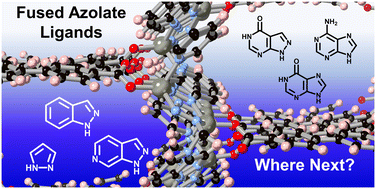
CrystEngComm, 2022,24, 8197-8207
https://doi.org/10.1039/D2CE01475K
Compositionally graded crystals as a revived approach for new crystal engineering for the exploration of novel functionalities
Nanoscale compositionally graded crystals have huge potential to allow the exploration of new functionalities through crystal lattice modulation.

CrystEngComm, 2022,24, 2359-2369
https://doi.org/10.1039/D2CE00041E
Crystal engineering of nanomaterials: current insights and prospects
Nanocrystal engineering has evolved into a dynamic research area over the past few decades but is not properly defined. Here, we present select examples to highlight the diverse aspects of crystal engineering applied on inorganic nanomaterials.
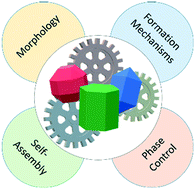
CrystEngComm, 2021,23, 7916-7927
https://doi.org/10.1039/D1CE00601K
Determining the mechanisms of deformation in flexible crystals using micro-focus X-ray diffraction
A newly developed methodology allows for the determination of the mechanisms of deformation in flexible crystals with atomic precision. With broader applications, mapping experiments have wide reaching potential within the field of materials science.
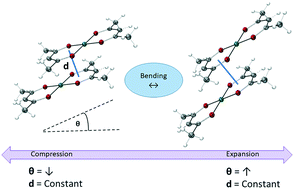
CrystEngComm, 2021,23, 5731-5737
https://doi.org/10.1039/D1CE00401H
Potential and challenges of engineering mechanically flexible molecular crystals
Crystal adaptronics has undergone tremendous developments that have been utilized to rationalize dynamics in crystals. This highlight discusses about the role of intermolecular interactions in rationalizing mechanical responses in crystals.
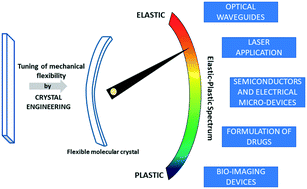
CrystEngComm, 2021,23, 5711-5730
https://doi.org/10.1039/D1CE00173F
Coordination supramolecules with oxazoline-containing ligands
This highlight focuses on the recent development of oxazoline-based discrete coordination complexes and coordination polymers.

CrystEngComm, 2018,20, 6109-6121
https://doi.org/10.1039/C8CE01099D
TTF–PTM dyads: from switched molecular self assembly in solution to radical conductors in solid state
Dyads formed by tetrathiafulvalene (TTF) linked to perchlorotriphenylmethyl (PTM) radicals exhibit interesting physical properties such as bistability in solution or conductivity in solid state.
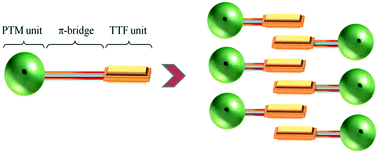
CrystEngComm, 2017,19, 197-206
https://doi.org/10.1039/C6CE01660J
Role of mechanochemical synthesis in the crystal chemistry of leflunomide
The mechanochemical experiments on leflunomide result in the formation of solvate with DMSO and salt with piperazine via conversion to the Z-form of teriflunomide. These solid-state forms were characterized by diffraction and thermal techniques.
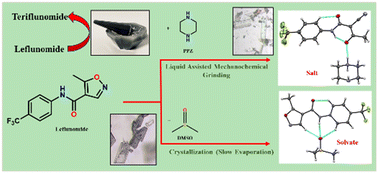
CrystEngComm, 2023,25, 4779-4792
https://doi.org/10.1039/D3CE00373F
Vapor–liquid–solid growth of 4H-SiC single crystal films with extremely low carrier densities in chemical vapor deposition with a Pt–Si alloy flux and X-ray topography analysis of their dislocation propagation behaviors
The CVD–VLS process for 4H-SiC films with a Pt–Si alloy flux achieved their low carrier densities of ∼1015 cm−3, demonstrating a remarkable etch back effect and a possible conversion of TEDs and TSDs in the substrate to BPDs in the films.

CrystEngComm, 2021,23, 5039-5044
https://doi.org/10.1039/D1CE00625H
Solid-state behaviors of imines: colossal biaxial positive thermal expansion, motion capability, and phase transitions
The torsional flexibility of imines affects solid-state packing and properties. Behaviors including colossal thermal expansion, pedal motion, and phase transitions in imine-containing solids are described.
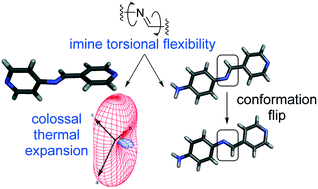
CrystEngComm, 2021,23, 4439-4443
https://doi.org/10.1039/D1CE00706H
Ambient L-lactic acid crystal polymorphism
The second and third crystalline forms of lactic acid are described, yet along with the known structure, they together fail to reproduce any of the supramolecular aggregates that have long been observed in isotropic media.
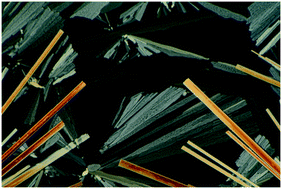
CrystEngComm, 2021,23, 2644-2647
https://doi.org/10.1039/D1CE00285F
Reversible facile single-crystal-to-single-crystal polymorphic transition accompanied by unit cell volume expansion and twinning
Reversible and facile single-crystal-to-single-crystal transformation between two polymorphs of diphenhydramine citrate leads to molecular level understanding of crystal phase change.
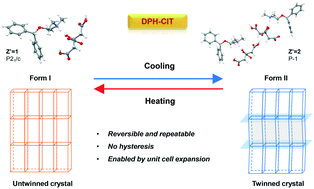
CrystEngComm, 2021,23, 2648-2653
https://doi.org/10.1039/D1CE00055A
Photoreactive salt cocrystal: N+–H⋯N hydrogen bond and cation–π interactions support a cascade-like photodimerization of a 4-stilbazole
Hydrogen bonds (i.e., N+–H⋯N) in combination with cation⋯π interactions enable a cascade-like [2 + 2] photodimerization of 4-stilbazole in a salt cocrystal.

CrystEngComm, 2021,23, 1071-1074
https://doi.org/10.1039/D0CE01885F
Investigating the solid-state assembly of pharmaceutically-relevant N,N-dimethyl-O-thiocarbamates in the absence of labile hydrogen bonds
There are many active pharmaceutical ingredients that lack N–H, O–H and S–H hydrogen-bond donor functional groups.
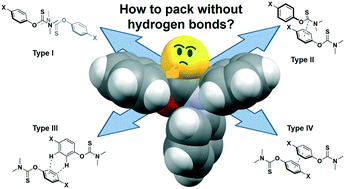
CrystEngComm, 2020,22, 8290-8298
https://doi.org/10.1039/D0CE01336F
A user-friendly application for predicting the outcome of co-crystallizations
An automated application, CoForm, was used for predicting the outcomes of attempted co-crystallizations between two active pharmaceutical ingredients, loratadine and desloratadine, and 41 potential co-formers from the general interest (OGI) list.
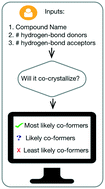
CrystEngComm, 2020,22, 6776-6779
https://doi.org/10.1039/D0CE01074J
Application of a tetrapyrimidyl cyclobutane synthesized in the organic solid state: a halogen-bonded supramolecular ladder
A supramolecular ladder sustained by halogen bonds with rungs based upon a photoproduct, namely rctt-tetrakis(5′-pyrimidyl)cylcobutane, generated in the solid state is reported.

CrystEngComm, 2020,22, 6780-6782
https://doi.org/10.1039/D0CE01280G
Enhanced fluorescence by increasing dimensionality: a novel three-dimensional luminescent metal–organic framework with rigidified ligands
A novel 3D luminescent MOF has been developed by the incorporation of an organic chromophore, demonstrating the photoluminescence of MOFs can be greatly enhanced by increasing their structural dimensionality.
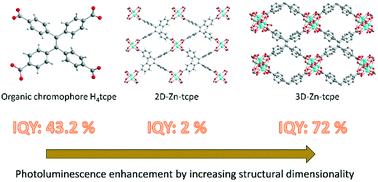
CrystEngComm, 2020,22, 5946-5948
https://doi.org/10.1039/D0CE01092H
Repurposing of the anti-HIV drug emtricitabine as a hydrogen-bonded cleft for bipyridines via cocrystallization
Supramolecular repurposing of the anti-HIV drug emtricitabine enables the recognition of rod-shaped bipyridines as a hydrogen-bonded supramolecular cleft.
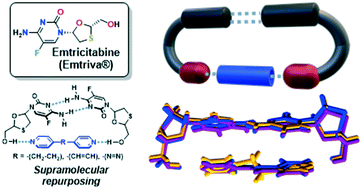
CrystEngComm, 2020,22, 3563-3566
https://doi.org/10.1039/D0CE00474J
Intrinsically porous molecular building blocks for metal organic frameworks tailored by the bridging effect of counter cations
Intrinsically porous molecular building blocks are used for the rational design and construction of molecular-level controlled porous materials.
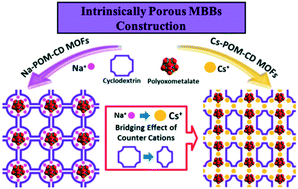
CrystEngComm, 2020,22, 2889-2894
https://doi.org/10.1039/D0CE00397B
Straightening out halogen bonds
A new parameter is proposed to quantify the linearity of halogen bonds.
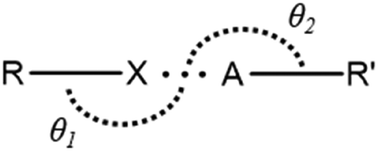
CrystEngComm, 2020,22, 1687-1690
https://doi.org/10.1039/D0CE00176G
The landscape of mechanical properties of molecular crystals
An analysis of compiled literature nanoindentation contact hardness (Hc) and elastic modulus (E) values of molecular crystals revealed a wide range of mechanical properties (0.001–1.80 GPa for Hc and 0.27–46.8 GPa for E).
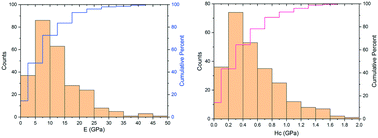
CrystEngComm, 2020,22, 1149-1153
https://doi.org/10.1039/C9CE01874C
Role of hydrogen bonding in cocrystals and coamorphous solids: indapamide as a case study
Crystalline and amorphous stable binary compounds of indapamide for high solubility and permeability.
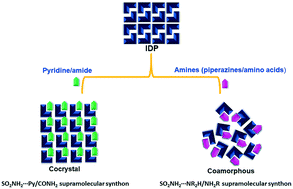
CrystEngComm, 2019,21, 2043-2048
https://doi.org/10.1039/C8CE01075G
Remarkable decrease in stiffness of aspirin crystals upon reducing crystal size to nanoscale dimensions via sonochemistry
Nano-dimensional crystals of aspirin generated through sonochemistry exhibit Young's modulus values an order of magnitude softer than macro-dimensional crystals.

CrystEngComm, 2019,21, 2049-2052
https://doi.org/10.1039/C8CE00764K
Thermal expansion along one-dimensional chains and two-dimensional sheets within co-crystals based on halogen or hydrogen bonds
Co-crystals assembled via halogen or hydrogen bonds yield minimal thermal expansion along 1D chains and greater expansion in 2D sheets.

CrystEngComm, 2018,20, 7232-7235
https://doi.org/10.1039/C8CE01090K
Subsurface nucleation of supercooled acetaminophen
Nucleation of acetaminophen glass at room temperature originates from ∼50 μm below the surface.

CrystEngComm, 2018,20, 6867-6870
https://doi.org/10.1039/C8CE01148F
Lack of dependence of mechanical properties of baicalein cocrystals on those of the constituent components
Three baicalein (BAI) cocrystals with nicotinamide (NCT), caffeine (CAF), and isoniazid (ISN) exhibited excellent tabletability despite the markedly different tabletability of the coformers.

CrystEngComm, 2018,20, 5486-5489
https://doi.org/10.1039/C8CE00787J
Uniaxial negative thermal expansion induced by moiety twisting in an organic crystal
Anomalous thermal expansion of a new diyn-diol molecule was studied by means of variable-temperature single-crystal X-ray diffraction. Analysis of the unit cell axes as a function of temperature shows that the material experiences uniaxial negative thermal expansion. Packing analysis of the crystal structures reveals twisting of the cyclopentyl moiety relative to the diyne spine with increasing temperature.
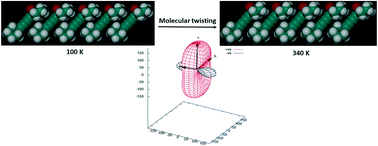
CrystEngComm, 2018,20, 5123-5126
https://doi.org/10.1039/C8CE01169A
Solvatomorphism of Reichardt's dye
Six different crystal structures are obtained depending on the crystallization solvent.
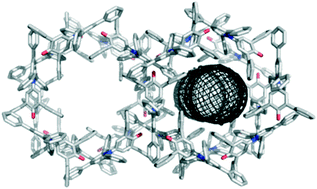
CrystEngComm, 2018,20, 2912-2915
https://doi.org/10.1039/C8CE00480C
Molecular tectonics: control of crystalline sequences
Isostructural and almost isometric crystals that differ in their colour may be welded in solution and under mild conditions into crystalline materials with imposed sequences.

CrystEngComm, 2018,20, 2233-2236
https://doi.org/10.1039/C8CE00478A
Will they co-crystallize?
Co-crystal screening data and machine learning models allows prediction of the most likely co-formers to use for new molecules.
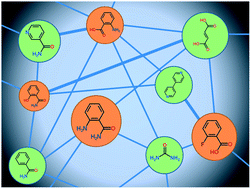
CrystEngComm, 2017,19, 5336-5340
https://doi.org/10.1039/C7CE00587C
Self-templating accelerates precipitation of carbamazepine dihydrate during the dissolution of a soluble carbamazepine cocrystal
Similarly organized carbamazepine clusters in a soluble cocrystal with glutaric acid templated the nucleation of carbamazepine dihydrate during dissolution.
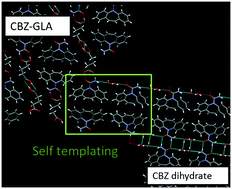
CrystEngComm, 2017,19, 1156-1159
https://doi.org/10.1039/C6CE02418A
One-dimensional water cages with repeat units of (H2O)24 resembling pagodane trapped in a 3D coordination polymer: proton conduction and tunable luminescence emission by adsorption of anionic dyes
A 3D-coordination polymer was shown to trap one-dimensional polyhedral water cages consisting of repeat units of (H2O)24, the geometry of which resembles the exotic organic molecule pagodane.
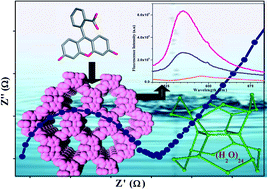
CrystEngComm, 2015,17, 4439-4443
https://doi.org/10.1039/C5CE00969C
Light and thermally activated spin crossover coupled to an order–disorder transition of a propyl chain in an iron(III) complex
A series of three solvates [Fe(naphPren)2]I·CH2Cl21, [Fe(naphPren)2]I·CHCl32 and [Fe(naphPren)2]I·acetone 3 showing thermal and light-induced spin crossover is reported.

CrystEngComm, 2023,25, 4126-4132
https://doi.org/10.1039/D3CE00425B
Synthesis, structure and magnetic properties of two bis(oxalato)cuprate(II) salts with pyridinium type counter ions
In the Cu(II) oxalate salts of (C5H7N2O)2[Cu(C2O4)2] 1 and C13H16N2[Cu(C2O4)2] 2, the oxalate adopts different coordination modes: the common bidentate chelating oxalate in 1 and the relatively scarce μ-oxalato-κ3O1,O2:O1′ in 2.
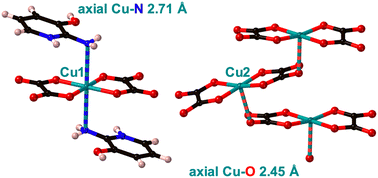
CrystEngComm, 2023,25, 1479-1485
https://doi.org/10.1039/D2CE01513G
A series of cation-modified robust zirconium-based metal–organic frameworks for carbon dioxide capture
Cation-modified and robust zirconium-based metal–organic frameworks demonstrate enhanced performance for carbon dioxide capture.
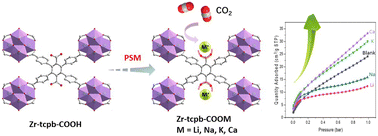
CrystEngComm, 2023,25, 1067-1075
https://doi.org/10.1039/D2CE01633H
Solubility and permeability enhancement of BCS class IV drug ribociclib through cocrystallization
Cocrystallization improves the solubility and permeability of BCS class IV anticancer drug ribociclib as a cocrystal with resorcinol and as a salt hydrate with vanillic acid.
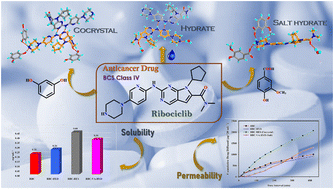
CrystEngComm, 2022,24, 7915-7923
https://doi.org/10.1039/D2CE01288J
On the energetic stability of halogen bonds involving metals: implications in crystal engineering
This manuscript reports a CSD survey of X-ray structures exhibiting halogen bonds involving metals of group 10 as electron donors. The DFT study on several model systems discloses that the interactions are moderately strong.
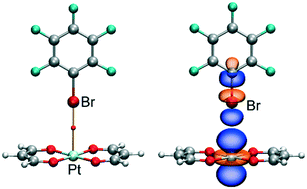
CrystEngComm, 2022,24, 4440-4446
https://doi.org/10.1039/D2CE00545J
Metal–organic framework structures of fused hexagonal motifs with cuprophilic interactions of a triangular Cu(I)3(pyrazolate-benzoate) metallo-linker
The hexagonal motifs dictated by the {Cu3} pyrazolate triangular units are joined together by the additional connectivity of the various alternating zinc (oxo)carboxylate units to form 2D/3D open structures (* relates the same example-structure).
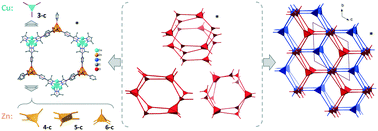
CrystEngComm, 2022,24, 3675-3691
https://doi.org/10.1039/D2CE00268J
Supramolecular assemblies of Zn(II) complexes with a D–π–A ligand for sensing specific organic molecules
Three Zn(II) supramolecular assemblies are fabricated with a D–π–A ligand and present good fluorescent sensing properties for specific organic molecules.
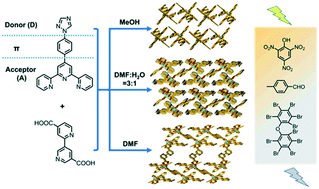
CrystEngComm, 2022,24, 3612-3620
https://doi.org/10.1039/D2CE00452F
Calcium oxalate crystallization in synthetic urinary medium: the impact of resorcinares and calixarenes
The impact of macrocycles on calcium oxalate formation. Calcium oxalate is a major component of kidney stones, an ailment that affects many people globally.
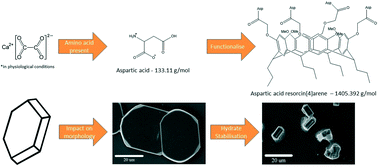
CrystEngComm, 2022,24, 1394-1406
https://doi.org/10.1039/D1CE01445E
Polymorphism and distinct physicochemical properties of the phloretin–nicotinamide cocrystal
Two novel polymorphs of a cocrystal involving phloretin and nicotinamide were identified and found where the polymorphs show distinct crystal structures, photoluminescence, and dissolution rates.
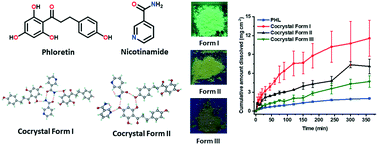
CrystEngComm, 2022,24, 560-570
https://doi.org/10.1039/D1CE01352A
Impact of flexible succinate connectors on the formation of tetrasulfonylcalix[4]arene based nano-sized polynuclear cages: structural diversity and induced chirality study
The formation of three types of supramolecular coordination cages is described. Tetrasulfonylcalixarene, combined with metallic salts (Ni, Co and Zn) and the flexible succinate ligand, led to cages. H bonded induced chirality was observed for both isomorphous cages.
![Graphical abstract: Impact of flexible succinate connectors on the formation of tetrasulfonylcalix[4]arene based nano-sized polynuclear cages: structural diversity and induced chirality study](/en/Image/Get?imageInfo.ImageType=GA&imageInfo.ImageIdentifier.ManuscriptID=D1CE01482J&imageInfo.ImageIdentifier.Year=2022)
CrystEngComm, 2022,24, 628-638
https://doi.org/10.1039/D1CE01482J
Fecht's acid revisited: a spirocyclic dicarboxylate for non-aromatic MOFs
The first of a new class of spiroalkane-derived MOF linkers shows aromaticity is not a prerequisite for ligand design in porous materials.
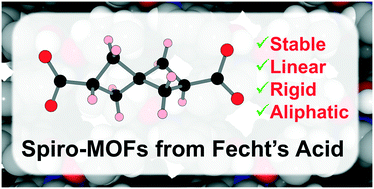
CrystEngComm, 2022,24, 484-490
https://doi.org/10.1039/D1CE01542G
Schiff base ligands derived from 1,2-bis(2′-nitro-/amino-phenoxy)-3-R-benzene and 2-hydroxy-1-naphthaldehyde and their Cu/Zn(II) complexes: synthesis, characterization, X-ray structures and computational studies
Racemic crystals of Cu/Zn(II)-tetradentate Schiff base ligands with Λ/Δ-chirality induction at-metal center.

CrystEngComm, 2021,23, 6322-6339
https://doi.org/10.1039/D1CE00829C
Salts, solvates and hydrates of the multi-kinase inhibitor drug pazopanib with hydroxybenzoic acids
Eight cocrystal-salts of the multi-kinase drug pazopanib with hydroxybenzoic acids are sustained by the strong, ionic aminopyridinium⋯carboxylate heterosynthon of N–H⋯O hydrogen bonds between the carboxylic acid donor and amino-pyrimidine acceptor.
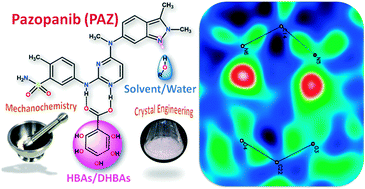
CrystEngComm, 2021,23, 5994-6011
https://doi.org/10.1039/D1CE00785H
Tuning the mechanical flexibility of organic molecular crystals by polymorphism for flexible optical waveguides
The ability to selectively tune the optical and the mechanical properties of organic molecular crystals offers a promising approach towards developing flexible optical devices.
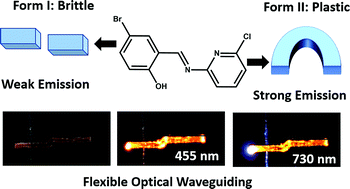
CrystEngComm, 2021,23, 5815-5825
https://doi.org/10.1039/D1CE00642H
Photomechanical response of sulfonylhydrazone molecular crystals
Photomechanical responses of the single crystals of a series of sulfonylhydrazones are explored for the first time.
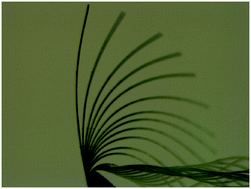
CrystEngComm, 2021,23, 4910-4916
https://doi.org/10.1039/D1CE00478F
Interplay of halogen and hydrogen bonding in a series of heteroleptic iron(III) complexes
The impact of the halogen substituent on supramolecular preferences that influence packing is explored in a series of heteroleptic iron(III) complexes.
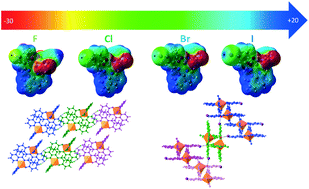
CrystEngComm, 2021,23, 4069-4076
https://doi.org/10.1039/D1CE00480H
Solubility improvement of curcumin with amino acids
Eutectic, co-amorphous, cocrystal, and physical mixtures of curcumin with basic amino acids are prepared and characterized by PXRD, DSC, NMR, FT-IR, and SEM; solubility and dissolution improvement achieved in 40% ethanol–water system.
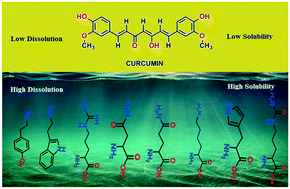
CrystEngComm, 2021,23, 3398-3410
https://doi.org/10.1039/D1CE00171J
Barium sulfate crystallization in non-aqueous solvent
The dielectric constant impacts on oriented attachment as well as solubility and morphology.
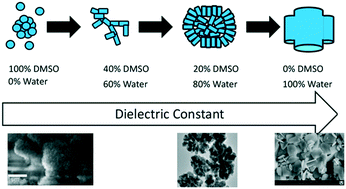
CrystEngComm, 2021,23, 2249-2261
https://doi.org/10.1039/D0CE01664K
Non-covalent interactions involving remote substituents influence the topologies of supramolecular chains featuring hydroxyl-O–H⋯O(hydroxyl) hydrogen bonding in crystals of (HOCH2CH2)2NC(![[double bond, length as m-dash]](https://www.rsc.org/images/entities/char_e001.gif) S)N(H)(C6H4Y-4) for Y = H, Me, Cl and NO2
S)N(H)(C6H4Y-4) for Y = H, Me, Cl and NO2
Secondary non-covalent interactions prove crucial in determining the topology of supramolecular chains sustained by conventional O–H⋯O hydrogen bonding.
![Graphical abstract: Non-covalent interactions involving remote substituents influence the topologies of supramolecular chains featuring hydroxyl-O–H⋯O(hydroxyl) hydrogen bonding in crystals of (HOCH2CH2)2NC( [[double bond, length as m-dash]] S)N(H)(C6H4Y-4) for Y = H, Me, Cl and NO2](/en/Image/Get?imageInfo.ImageType=GA&imageInfo.ImageIdentifier.ManuscriptID=D0CE01810D&imageInfo.ImageIdentifier.Year=2021)
CrystEngComm, 2021,23, 1723-1743
https://doi.org/10.1039/D0CE01810D
Developing design tools for introducing and tuning structural order in ionic liquids
Ionic liquids – ionic crystals – ionic liquid crystals? Structural order in imidazolium-based ILs, a series of asymmetrical 1-dodecyl-2-methyl-3-alkylimidazolium bromides, [C12C1Cnim][Br] with n = 0–12.
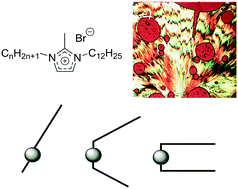
CrystEngComm, 2021,23, 1785-1795
https://doi.org/10.1039/D0CE01672A
Vapour–liquid–solid-like growth of high-quality and uniform 3C–SiC heteroepitaxial films on α-Al2O3(0001) substrates
We employ our pulsed laser deposition system with rapid beam deflection to demonstrate the heteroepitaxial growth of 3C–SiC thin films by a vapour–liquid–solid-like mechanism by alternating deposition of SiC and NiSi2 flux in nanoscale.
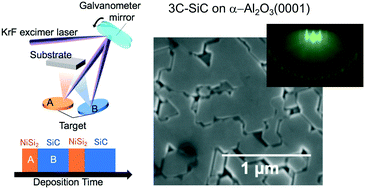
CrystEngComm, 2021,23, 1709-1717
https://doi.org/10.1039/D0CE01793K
Organic solvates in the Cambridge Structural Database
Data informatics methods applied to the Cambridge Structural Database reveal shifting trends in solvate formation and inherent biases in the symmetry and packing fraction of solvates and their solvent-free analogues.
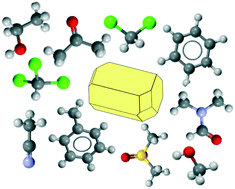
CrystEngComm, 2021,23, 1555-1565
https://doi.org/10.1039/D0CE01749C
Structure–property correlations in piracetam polytypes
Analysis of piracetam polytypes using energy-vector models, thermal expansion and nanoindentation measurements, produces a plausible link between their crystal structures and tableting behaviour.

CrystEngComm, 2021,23, 1226-1233
https://doi.org/10.1039/D0CE01694B
Suppression of isotopic polymorphism
Crystallisation at pressure overcomes the effect of isotopic polymorphism in the methylpyridine pentachlorophenol co-crystal. Though the hydrogenated Cc polymorph can only be obtained at pressure, it is stable on recovery to ambient conditions.
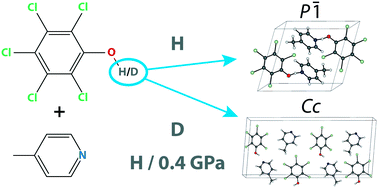
CrystEngComm, 2021,23, 769-776
https://doi.org/10.1039/D0CE01636E
Supramolecular architectures sustained by delocalised C–I⋯π(arene) interactions in molecular crystals and the propensity of their formation
A survey of delocalised C–I⋯π(chelate ring) interactions is presented.
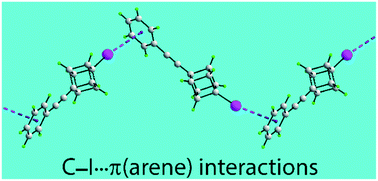
CrystEngComm, 2021,23, 904-928
https://doi.org/10.1039/D0CE01677B
Enhanced solubility, permeability, and tabletability of nicorandil by salt and cocrystal formation
Cocrystallization is a rational selection crystal engineering approach for the development of novel solid forms with enhanced physicochemical and mechanical properties.

CrystEngComm, 2021,23, 227-237
https://doi.org/10.1039/D0CE01316A
Experimental and computational evidence for a stabilising C–Cl(lone-pair)⋯π(chelate-ring) interaction
Stabilising C–Cl(lone-pair)⋯π(chelate ring) interactions are described.
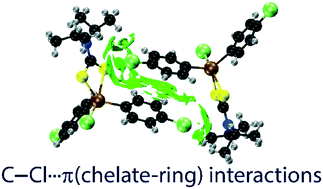
CrystEngComm, 2021,23, 119-130
https://doi.org/10.1039/D0CE01478H
Crystallisation of organic salts by sublimation: salt formation from the gas phase
Co-sublimation of two neutral components yields crystals of salts and co-crystals. Experiments show that during sublimation of salts, proton transfer occurs after molecules enter the gas phase.

CrystEngComm, 2020,22, 7826-7831
https://doi.org/10.1039/D0CE01470B
Nuclearity control in calix[4]arene-based zinc(II) coordination complexes
Three zinc-based coordination complexes were selectively generated in the crystalline phase using a new flexible molecular “tweezers” calix[4]arene derivative ligand decorated with two appended carboxylic moieties and benzyl spacers ((3-4H)).
![Graphical abstract: Nuclearity control in calix[4]arene-based zinc(ii) coordination complexes](/en/Image/Get?imageInfo.ImageType=GA&imageInfo.ImageIdentifier.ManuscriptID=D0CE01232G&imageInfo.ImageIdentifier.Year=2020)
CrystEngComm, 2020,22, 7693-7703
https://doi.org/10.1039/D0CE01232G
Ring stacking and laddering in ammonium carboxylate salts: extension to secondary ammonium salts
A combined CSD and experimental study shows that the ring stacking and laddering principle, an ionic model, gives insight into the crystal structures of secondary ammonium carboxylate salts.

CrystEngComm, 2020,22, 7399-7406
https://doi.org/10.1039/D0CE00616E
The remarkable propensity for the formation of C–H⋯π(chelate ring) interactions in the crystals of the first-row transition metal dithiocarbamates and the supramolecular architectures they sustain
C–H⋯π(chelate ring) interactions play an important role in assembling first-row transition metal dithiocarbamates in their crystals.
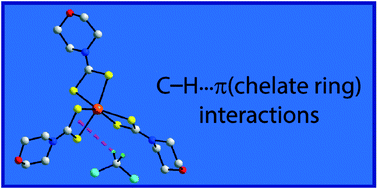
CrystEngComm, 2020,22, 7308-7333
https://doi.org/10.1039/D0CE00289E
Systematic coformer contribution to cocrystal stabilization: energy and packing trends
CSD data mining and energy calculations show that coformer self-interactions might significantly contribute to the packing energy stabilization of cocrystals.
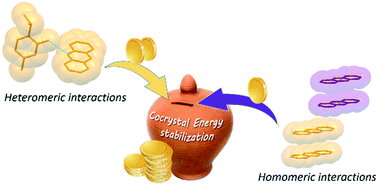
CrystEngComm, 2020,22, 7341-7349
https://doi.org/10.1039/D0CE00291G
Data mining the Cambridge Structural Database for hydrate–anhydrate pairs with SMILES strings
A search method based on SMILES string matching was developed to identify hydrate–anhydrate structure pairs in the Cambridge Structure Database.
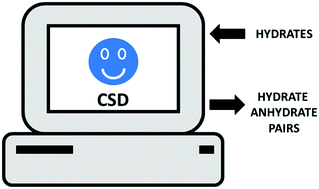
CrystEngComm, 2020,22, 7290-7297
https://doi.org/10.1039/D0CE00273A
Increasing the performance, trustworthiness and practical value of machine learning models: a case study predicting hydrogen bond network dimensionalities from molecular diagrams
The value of a hydrogen bond network prediction model was improved using a tool to increase prediction trust. Its accuracy could be improved up to 73% or 89% with the compromise that only 34% and 8% of the test examples could be predicted.

CrystEngComm, 2020,22, 7186-7192
https://doi.org/10.1039/D0CE00111B
Investigating the role of reducing agents on mechanosynthesis of Au nanoparticles
The influence of reducing agents on the mechanochemical synthesis of Au nanoparticles differ significantly from analogous solution syntheses. Environmentally benign mechanochemical syntheses of metal nanoparticles therefore require dedicated studies.

CrystEngComm, 2020,22, 6261-6267
https://doi.org/10.1039/D0CE00826E
Selective encapsulation and extraction of hydrogenphosphate by a hydrogen bond donor tripodal receptor
Intramolecular N–H⋯O![[double bond, length as m-dash]](https://www.rsc.org/images/entities/char_e001.gif) C hydrogen bonding between the inner amide groups dictates the receptor–anion complementarity in a tripodal receptor towards selective encapsulation of hydrogenphosphate in the outer urea cavity by multiple hydrogen bonds.
C hydrogen bonding between the inner amide groups dictates the receptor–anion complementarity in a tripodal receptor towards selective encapsulation of hydrogenphosphate in the outer urea cavity by multiple hydrogen bonds.
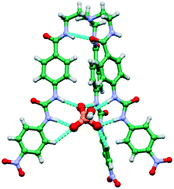
CrystEngComm, 2020,22, 6152-6160
https://doi.org/10.1039/D0CE00834F
About this collection
To celebrate the recently refreshed CrystEngComm Advisory Board, we have highlighted a selection of published work from our Advisory board members. This collection showcases the wide range of research that our members have published in the journal. Further articles will be added to this collection as they are published so please do return to keep up to date with the work of our Advisory Board members. Find the CrystEngComm Advisory Board members here.